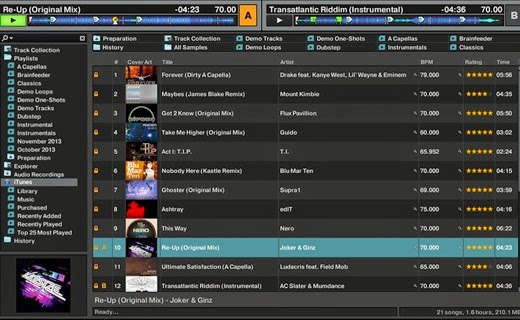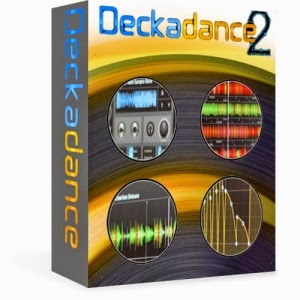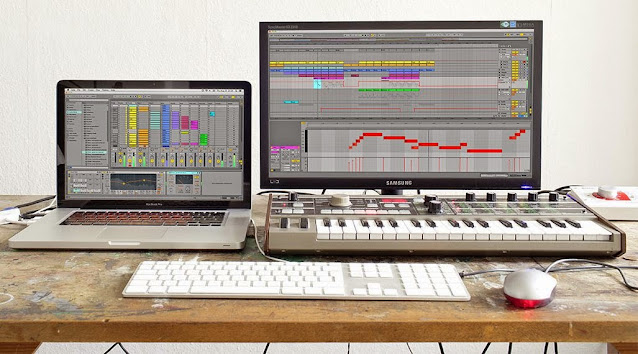Nuendo 6.5 adds new features dedicated to post-production workflows. Offering major enhancements to functionality in critical areas for audio post such loudness processing, bass frequency management as well as ADR and foley recording, this latest update also includes time-saving new features that expedite daily tasks.
Top 10 features
- Automated Loudness processing to both industry standards such as EBU R128 and fully user-definable settings.
- Professional bass management including several routing and filter options coming with the new Bass Manager plug-in.
- ADR Taker 2.0 introduces a major update of Nuendo’s ADR taker system with enhancements for voice and foley recording such as new playback/recording modes, automated naming schemes and pre-record buffer.
- Nuendo TrackVersions allows for creating, renaming and managing parallel versions of the same track plus many addition features far beyond conventional playlists
- Track visibility management speeds up handling especially of large projects by offering dynamic displaying of audio tracks and groups in the project window.
- Improved AAF Filter now supports even better import/export to Pro Tools and Media Composer
- New monitoring and metering section for better source management and better overview on the most frequently used functions
- Experience a richer sound with REVelation reverb and Magneto 2, a warm and smooth tape saturation plug-in
- Track Quick Controls can now be saved as presets and loaded for immediate access
- Steinberg Hub with direct access to user-defined folders and news section for the latest Nuendo product updates
The workflow evolution
Indispensable: The new loudness processing feature
Nuendo 6.5 introduces a new automatic loudness processing feature that lets you optimize your audio for loudness quickly and efficiently by exporting audio files at user-defined loudness levels such as the industry-standard EBU values (e.g. -23 LUFS). True peak values for rendered audio are also user-definable. Because all settings have been conveniently integrated into the Export Settings dialog box, they are also available for more complex rendering tasks, such as cycle markers or batch export functions. And, of course, optional peak level limitation is also available.
 |
| Image by steinberg.net |
Further enhancements include a new true peak spot indication directly within the Nuendo loudness track as well as an enhanced loudness metering scale ranging down to +18 dBFS.
Summary
- Exact loudness processing to industry-standard values
- User-definable values for maximum flexibility
- Full integration in the Export Settings dialog
- True peak indicators in Loudness Track
Nuendo TrackVersions. Playlists upgraded.
 |
| Image by steinberg.net |
Playlists are known as a vital part of the modern studio workflow. Nuendo 6.5 introduces TrackVersions, providing even more workflow efficiency than other standard playlist solutions. Create, rename and manage parallel versions of the same track or tracks and use them to compare takes or create alternative versions of your recordings while keeping all track settings. Interfacing perfectly with existing track handling features, the flexible TrackVersions feature will significantly speed up your workflow when working not only with audio but also MIDI, instrument, chord, tempo & signature tracks
Seamless import of AAF files from Pro Tools and Media Composer.
Nuendo 6.5 ensures improved compatibility with latest versions of other program platforms when exchanging AAF files. Building on the extended AAF import functionality included in the Nuendo 6.0.7 update, Nuendo 6.5 completes the new AAF filter functionality by adding features for exporting to applications such as Pro Tools and Media Composer.
 |
| Image by steinberg.net |
Better, faster, more convenient: Redesigned Control Room and Metering section
Nuendo 6.5 features a completely redesigned control room and metering section, providing better visibility of more functions simultaneously. Important control room functions, such as level, dim and downmix features can be displayed together with the master meter, allowing for keeping track on the most important parameters in daily production situations. Plus, the new control room hosts up to four talkback microphones and a dedicated output port for metering, enabling the integration of hardware meters.
Track visibility management
 |
| Image by steinberg.net |
Nuendo 6.5 speeds up the workflow significantly thanks to the new track visibility management feature. Huge projects containing hundreds of audio tracks can easily be managed by dynamically displaying only the tracks you actually want to see. Using the same approach as the channel visibility management introduced in MixConsole, various View Agents help you by instantly bringing the right tracks into focus; this powerful new feature will help you maintain a full overview of your project at all times — even on the largest, most complex productions.
Instant transient navigation
 |
| Image by steinberg.net |
Thanks to the new instant hitpoint navigation function, you can now “tab to transients” on audio events directly within the Nuendo project window. Hitpoints are automatically calculated in the background as soon as audio material is recorded or imported into the arrangement window. Simply use the keyboard shortcuts to tab back and forth to navigate around the audio material.
New Re-record mode
 |
| Image by steinberg.net |
Nuendo 6.5 includes the new Re-record mode to repeat a recorded take immediately. Once the Re-record mode is activated, you can simple start a new recording by hitting the record button again. The recording will start from the original position preserving the original pre-count and metronome settings. A handy, time-saving new feature that’s as simple as it is useful.
Saving your Track Quick Controls
 |
| Image by steinberg.net |
The Track Quick Controls just got even more powerful! You can now save and load Track Quick Control assignments as presets for immediate access. Simply click on the Quick Control Track Inspector and apply existing Track Quick Control assignments even to other track types. This way, you can turn your Quick Control area into a a powerful command center for heavy used program functions.
Steinberg Hub with direct folder access and news section
 |
| Image by steinberg.net |
Nuendo 6.5 introduces the new Steinberg Hub, a multi-functional platform to increase your workflow speed. The integrated news section provides information on Nuendo updates and further Steinberg news, while the direct folder access window enables you to open your favorite Nuendo project folders with a single click. Simply define up to four of your most frequently used folders for direct access or start one of the recent Nuendo projects.
Internet recording with VST Connect SE 2.
 |
| Image by steinberg.net |
Nuendo 6.5 adds even more capabilities to one of the most exciting features in Nuendo: VST Connect SE 2 now supports MIDI. Version 2 of the next-generation online production tool lets you send MIDI data in real time over the Internet. VST Connect SE 2 has the power to revolutionize your recording process, allowing you to collaborate live over the Internet as though you and your fellow collaborators were in the same room.
ADR Taker 2.0 — Integrated system for voice & foley recording
Nuendo’s ADR Taker system — the world’s most powerful integrated system for voice and foley recording — has been extended in Nuendo 6.5 with important enhancements that make vocal and foley recording an incomparably fast and convenient experience.
Video overlay and take list improvements
 |
| Image by steinberg.net |
Review and edit speaker texts (video overlay) in stop mode, ideal for working with scripts which need modification during the recording session or even when the speaker’s already preparing for the next scene. Other important additions are the improved re-naming functions in the ADR marker window, making it easy to edit attributes of different markers at the same time (such as character name). It’s also possible to record several takes successively in one batch by freely selecting the appropriate scenes in the marker window, including a constant update of the dialog video overlay.
The newly added ADR Status indicator (colored light including red light) easily shows the actor the status of the ADR process inside the video window.
Automated naming scheme and recording
 |
| Image by steinberg.net |
Thanks to the new audio file naming scheme functions, the upgraded Nuendo ADR Taker now adds configurable attributes to the file name of each recording, making it even easier to search and find different recordings/roles. ADR Taker 2.0 also enables you to record automatically on user-defined tracks by pre-assigning a track to a specific role. The performance of the speaker is automatically recorded on the assigned track, making it a breeze to manage large ADR sessions with multiple roles on different tracks.
Record anywhere in Free mode
 |
| Image by steinberg.net |
The ADR Taker 2.0 introduces Free mode, a new function that allows utmost flexibility for ADR work. The Free mode enables you to start recordings at any point in the timeline, independently from the given marker/take structure of the ADR marker list. This means that you can just start the recording and let the speaker perform multiple scenes in one go, if desired. You can even set the start point of recordings within a longer scene (for example, second half of the scene) without the need to start the scene and wait for the playback to reach the desired position, speeding up the whole ADR process. Additionally, you can switch between rehearse and record process spontaneously, enhancing the entire quality of the ADR process.
Professional foley recordings
 |
| Image by steinberg.net |
The ADR Taker 2.0 is the perfect tool to also manage foley recording sessions more easily and flexibly. The powerful ADR take-list can be used to mark foley-relevant scenes and capture the foley artist’s performance accordingly. By using the new Free mode, the foley recording is not even bound to the end point of each single scene, making it easy to record longer foley takes in one go. Thanks to the automated naming scheme, foley files can be retrieved and used in the project on the basis of individual naming attributes such as the character name or foley specific topics like “underground” or “material.” All this plus numerous further functions such as the ADR status indicator (rehearse / record / review) and a function for adding second “swipes” make the Nuendo ADR Taker 2.0 the world’s most powerful integrated system for voice and foley recording.
Plug-ins for professional post-production
Bass Manager: Perfect bass frequency management
 |
| Image by steinberg.net |
The Bass Management plug-in brings additional tools to Nuendo 6.5 for routing and filtering low-frequency signals. Among the flexible new options are the ability to send a user-definable frequency range from the main mix directly to a subwoofer; this offers a lightning-fast way of separating bass frequencies from a main mix, for example, if the mix has been completed without a dedicated LFE channel.
Another new option is the ability to send a portion of the LFE channel to the main center or left/right speakers using the built-in crossover frequency controls. The final stage of dedicated filtering for the frequencies allocated to a subwoofer is the dedicated subwoofer section. Before/after metering offers a convenient visual representation of the levels routed to and from the new plug-in.
Smooth mixing with REVelation reverb
 |
| Image by steinberg.net |
Developed in conjunction with seasoned engineers and film mixers, Nuendo 6.5 comes with a super-rich and silky algorithmic reverb which recreates the vibe and character of famous hardware effects. REVelation offers a maximum degree of depth and adds its spatial magic on just about any instrument or sound, from string sections to lead vocals. Included with dozens of useful presets, REVelation will let your mix shine.
The return of a legend: Magneto 2
 |
| Image by steinberg.net |
Magneto 2 not only provides a warm, analog sound but also adds exciting new features such as the dual mode to give your tracks more flavor and personality — just like in the old days. And Magneto 2 lets you select the frequency range of the effect to be applied on your track. Magneto 2 offers more analog warmth and character to your digital world.
Source : steinberg.net


























.jpg)






